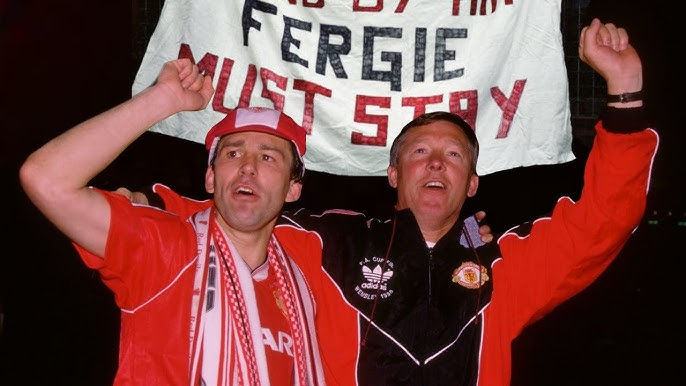This is getting VARY boring now!
- Steve Basing
- Sep 1
- 4 min read

I’m bored of talking about it. I’m bored of hearing about it. And quite frankly, I’m bored of writing about it. Yet, three games into the new Premier League season, the one unavoidable topic remains VAR.
I’d much rather be discussing Liverpool’s statement win over Arsenal, which—despite their less than convincing displays—leaves them the only side with a perfect start. In a game full of over-coached, robotic midfielders, Jack Grealish's renaissance in Everton blue surely leaves several Premier League managers regretting not gambling on one of the few true mavericks left. Consider Manchester City's early wobble, with two defeats in three games. In short, I want to talk about football—the actual game taking place on the pitch.
But once again, I can’t. Because once again, the weekend’s matches were overshadowed by a toxic mix of officiating incompetence and a VAR system that is simply not fit for purpose.
For the blissfully unaware, VAR—Video Assistant Referee—arrived in the Premier League in 2019/20 with the mandate to improve officiating in the league. It was to achieve this by reviewing all goals for possible infringements and by allowing the VAR officials to alert the referee to “clear and obvious” errors in their decisions or any off-the-ball incidents they may have missed.
This weekend’s biggest controversies unfolded at Stamford Bridge, where Chelsea hosted their West London rivals, Fulham. In the 22nd minute, Fulham’s Josh King thought he’d scored his first Premier League goal until VAR intervened, ruling that a foul had been committed in the build-up.
The “foul” in question was Fulham’s Rodrigo Muniz stepping on the toe of Chelsea’s Trevoh Chalobah as he turned him on the halfway line, several seconds before the ball ended up in the Chelsea net. Whether it was a foul or not is debatable. What isn’t debatable is that the decision fell far short of the “clear and obvious” threshold needed to overturn the on-field referee’s ruling. It left fans and pundits shocked, especially given how incredibly unusual it was to see VAR reach so far back to disallow a goal.
The decision made headlines and even compelled the referees' body, PGMOL, to acknowledge a mistake. Yet for me, a worse call came after the break, when VAR awarded Chelsea a penalty for handball by Ryan Sessegnon—while ignoring a blatant foul and handball by a Chelsea player just seconds earlier. Add in Robert Jones, the on-field referee, allowing Chelsea to score after first-half stoppage time had already elapsed, and it was no wonder one journalist feared that Fulham manager Marco Silva might ‘combust.’
To my mind, VAR’s biggest problem has always been “clear and obvious.” This vague standard provides VAR enormous leeway to intervene—or not—creating absurd situations where glaring errors aren’t corrected one week, while minor infractions are overturned the following.
The inconsistency leaves fans bewildered and often livid. And while inconsistency from human referees in real time was frustrating but understandable, inconsistency from a multi-camera video system is not. Leading rightly or wrongly—but certainly inevitably—to a perception among many fans that VAR is simply a tool used to deliver decisions convenient to certain teams, rather than correct ones.
The ambiguity of "clear and obvious" offside decisions has resulted in the greatest amount of VAR-inspired angst. Before VAR, football fans accepted that "level" meant onside, and "level" meant that the attacker and defender were roughly in line, with the attacker given the benefit of the doubt. Now, with semi-automated systems and 3D animations, we're arguing about millimeters—and sometimes body parts that aren't even supposed to count, like arms—as evidenced by Lyle Foster's disallowed equalizer for Burnley at Old Trafford on Saturday.
Scott Parker, Foster's manager, best captured the impact of VAR on the game when he warned that it had the potential to turn football "sterile."
It was a sentiment all football fans could understand. Since its inception, VAR has gradually eroded "the moment" to the point where it is now nearly completely eradicated. For those who are unaware, "the moment" refers to the raw, almost spiritual release that occurs when your team scores, which has since been replaced by hesitation and an anxious wait for confirmation. This delay means that even when the goal is scored, the post-game celebration is hollow and lacks the magic of "the moment."
Football isn’t the only game to employ a video referee; actually, it was late to the party in many ways. While I acknowledge that the subjective laws of football and its free-flowing nature make implementing technology more challenging, it is also true that football could learn a thing or two from other sports.
Cricket, for example, operates a review system where captains or batters can challenge decisions. It’s fast, respected, and built around supporting officials rather than re-refereeing the match. If the footage is inconclusive, the on-field call stands. Simple. Effective. Trusted.
While watching this summer’s gripping Test series between England and India, I couldn’t help but wonder how football has managed to butcher what cricket makes look effortless.
It is unlikely that VAR will be eliminated. However, implementing a cricket-style review system could save the game from itself, providing quick, transparent corrections while rebuilding trust. Most importantly, it would return us to discussing football itself—the 22 players on the field creating the action, not the one in a video booth challenging it.




![[Original size] DJ's Sports Show.png](https://static.wixstatic.com/media/75856f_7f4ffe7f83c14d209a701ef21c02c17d~mv2.png/v1/fill/w_120,h_120,al_c,q_85,usm_0.66_1.00_0.01,enc_avif,quality_auto/%5BOriginal%20size%5D%20DJ's%20Sports%20Show.png)




Comments